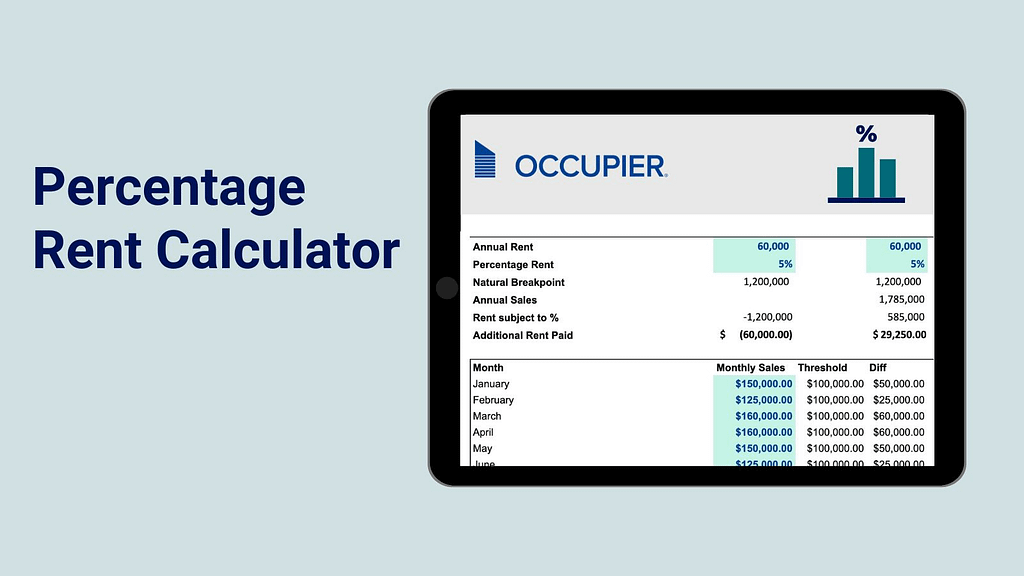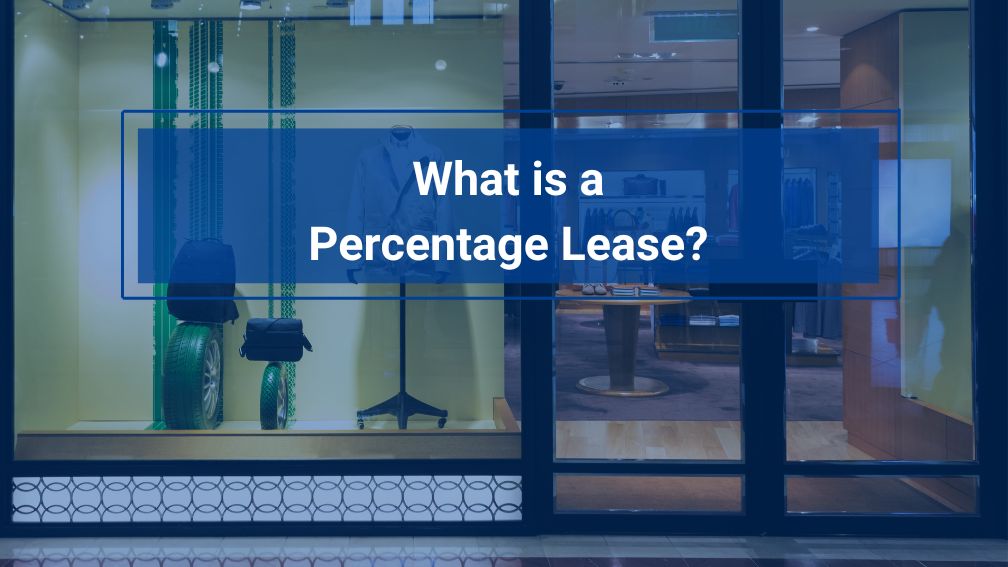What is a Percentage Lease?
Last Updated on May 17, 2024 by Morgan Beard
In this comprehensive guide, we will explore the concept of a percentage lease in commercial real estate. We’ll dive into its definition, how it works, its benefits, and its potential drawbacks. Understanding the intricacies of a percentage lease — especially as a retail tenant — will empower you to make informed decisions.
So, let’s get started on our journey to unravel the world of percentage leases and discover why they are a popular choice in the commercial real estate industry.
Understanding Percentage Leases
A percentage lease is a commercial agreement in which the tenants pay a base rent plus a percentage of their gross sales revenue to the landlord. This type of lease agreement is commonly used when retailers or restaurateurs are joining a multi-tenant retail space like a mall, shopping center or mixed-used development. In this arrangement, tenants pay a base rent plus a percentage of their gross sales revenue to the landlord. Unlike a fixed lease where tenants only pay a predetermined amount each month, a percentage lease allows landlords to share in the success of their tenants’ businesses.
Under a percentage lease, the tenant agrees to pay a base rent, which is usually lower than what they would pay in a fixed lease. In addition to the base rent, the tenant also agrees to pay an agreed-upon percentage rate of their gross sales revenue to the landlord. This percentage is usually specified in the lease agreement and can vary depending on the nature of the business and the specific terms negotiated.
Let’s say you own a retail store in a mall or shopping center and sign a percentage lease agreement with a landlord. The lease agreement states that you must pay a base rent of $2,000 per month plus 5% of your gross sales revenue. If your store generates $50,000 in sales for a given month, you would calculate your total rent payment as follows:
Base Rent: $2,000 Percentage Rent: $50,000 x 5% = $2,500
Total Rent Payment: $2,000 + $2,500 = $4,500
In this scenario, your total rent payment would be $4,500 for that month.
The Benefits of a Percentage Lease
1. Alignment of Interests
One of the key advantages of a percentage lease is that it aligns the interests of both the landlord and the tenant. Because the landlord receives a percentage of the tenant’s gross sales revenue, they have a vested interest in ensuring the tenant’s business succeeds. This alignment of interests can lead to a more collaborative and mutually beneficial relationship between the landlord and the tenant.
2. Lower Base Rent
For tenants, a percentage lease often comes with a lower base rent compared to a fixed lease. This can be particularly advantageous for businesses with fluctuating sales or seasonal variations. By paying a lower base rent, tenants have more flexibility to manage their expenses during slower periods while still providing the landlord with a fair share of their revenue during peak times.
3. Incentive for Landlords
Percentage leases provide an incentive for landlords to attract successful businesses to their properties. By sharing in the tenant’s business success, landlords can potentially earn higher rental income compared to fixed leases. This encourages landlords to strategically select tenants with strong sales potential, creating a win-win situation for both parties.
Percentage Rent – Excel Calculator

The Drawbacks of a Percentage Lease
While there are several benefits to a percentage lease, it’s important to consider the potential drawbacks as well:
1. Uncertainty for Tenants
The variable nature of a percentage lease can make financial planning and budgeting more challenging for tenants. Since the rent payment is tied to sales revenue, tenants face uncertainty regarding their monthly expenses. This uncertainty can be particularly stressful during periods of economic downturn or when sales performance is inconsistent.
2. Complexity of Calculations
Calculating the rent payment under a percentage lease requires tracking and reporting accurate sales figures. This additional administrative burden can be time-consuming for both tenants and landlords. It’s essential to maintain meticulous records and establish clear processes for reporting sales data to ensure accurate calculations and avoid disputes.
3. Higher Risk for Landlords
Percentage leases inherently carry a higher level of risk for landlords compared to fixed leases. If a tenant’s sales decline or their business fails, the landlord may experience a decrease in rental income. Landlords must carefully evaluate prospective tenants’ business viability and consider the potential impact on their overall rental revenue.
Strategies for Negotiating a Percentage Lease
Negotiating a percentage lease requires careful consideration of various factors and effective communication between both parties. Here are some strategies to keep in mind when entering into a percentage lease agreement:
1. Understand Your Business’s Sales Potential
Before entering into a percentage lease agreement, thoroughly assess your business’s sales potential. Evaluate trends in your industry, analyze your target market, and gauge the likelihood of achieving consistent and profitable sales. Understanding your sales potential will help you negotiate a fair percentage rent and minimize financial risks.
2. Seek Professional Advice
Consider consulting with a commercial real estate expert or a certified public accountant (CPA) experienced in lease negotiations. They can provide valuable insights and guidance on lease terms, market conditions, and industry standards. Their expertise can help you make informed decisions and negotiate favorable terms that align with your business goals.
3. Clarify Lease Agreement Terms
Ensure that the lease agreement clearly defines how the percentage rent will be calculated and paid. Include provisions for verifying and reporting sales figures accurately. By establishing a transparent and mutually agreed-upon process, you can minimize potential disputes and maintain a positive landlord-tenant relationship.
4. Negotiate Percentage Rent Caps or Breakpoints
Negotiating percentage rent caps or breakpoints can protect tenants from excessive rent payments in the event of exceptional sales growth. Caps limit the maximum percentage rent payable, while breakpoints establish thresholds beyond which the percentage rent percentage increases or decreases. These provisions provide tenants with greater financial security and predictability.
5. Consider Lease Renewal and Termination Clauses
When negotiating a percentage lease, pay attention to renewal and termination clauses. Determine whether the lease can be renewed upon expiration and, if so, the terms and conditions for renewal. Similarly, understand the implications of early termination, ensuring that both parties have a clear understanding of their rights and obligations.
Conclusion
Percentage leases provide a unique approach to commercial real estate rental agreements, offering benefits for both landlords and tenants. By sharing in the tenant’s sales revenue, landlords have a vested interest in supporting the success of their tenants’ businesses. Meanwhile, tenants benefit from lower base rent and the flexibility to align their expenses with their revenue.
